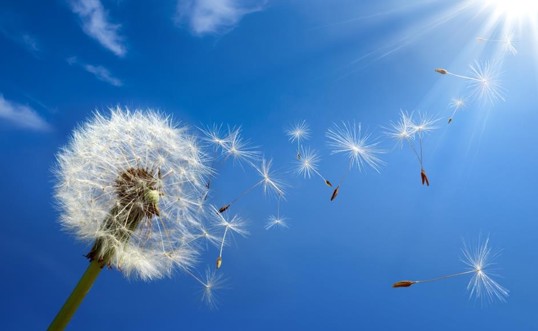Causes of Seasonal Allergies and Hay Fever
Date: 04/07/2016
Causes of Seasonal Allergies and Hay Fever
Every year, a battle begins for many of us. As the temperature rises and the pollen begins to seep into the air, 30% of adults suffer from some form of hay fever, and every year the number of people who suffer from these allergies raises by 5%. 50% of those new sufferers are children, so it is important to understand what causes the most common symptoms and educate sufferers on how best to combat any afflictions.
What Type of Pollen Affects You?
If you suffer from hay fever and know someone else who does, have you ever noticed that they might be symptomatic and sniffly, but you feel just fine? This might be due to you both having different ‘seasons’ of allergic reaction! We generally describe “hay fever” as something that comes up in Spring “when pollen happens” but in fact there are multiple types of pollen that can crop up at different times throughout the year, and each variety can affect different people. Identifying which kind of pollen affects you (whether it be one variety or all of them) can help you in preparing the right method at the right time, and keep your allergy season’s sniffles and itches to a minimum.
Spring
If you find yourself getting itchy eyed, sneezing or with a runny nose, you’re being affected by Tree Pollen, which is very powdery and fine, allowing it to be carried by the wind for miles and miles and giving it the property of being particularly invasive for allergy sufferers. While tree pollen is not the most common cause of hay fever, the variety of tree species that disperse pollen at different times does mean that is has the longest ‘spread’ of any pollen time, with the hazel and alder trees beginning their pollination in February, and the lime tree stretching all the way to July.
End of Spring, Beginning of Summer
The beginning of May all the way through to July is the season of Grass Pollen, THE most common allergen in the UK due its sheer abundance. Grass is everywhere, and so is the pollen, although the problem is exacerbated by summer’s penchant for warm and dry days, which allow for the pollen to travel further, un-deterred by moisture.
Late Autumn
This one always seems to catch people off guard! Weed Pollen comes during the unexpected months of September and October, so hay fever symptoms are usually attributed to a cold or the flu.
It is worth bearing in mind that some sufferers can be susceptible to all forms of pollen, so you may find that your allergy season lasts a particularly long time!
Other Causes
Certain fruits, vegetables and seeds we eat can trigger allergic reactions linked to hay fever, especially when eaten raw. This happens because the food’s chemical makeup is very similar to that of the pollen that gets dispersed. The most common foods that cause these reactions are melons, carrots, sunflower seeds and green peppers.
What Can Be Done?
There some simple preventative measures to help combat the inhalation of pollen during your specific allergy season, such as showering after venturing outside, however we do offer treatment options that can help if you are unsure what specific variety of allergy and hay fever affects you. If you’re unsure, click here to learn more, or contact our team to schedule an appointment.

